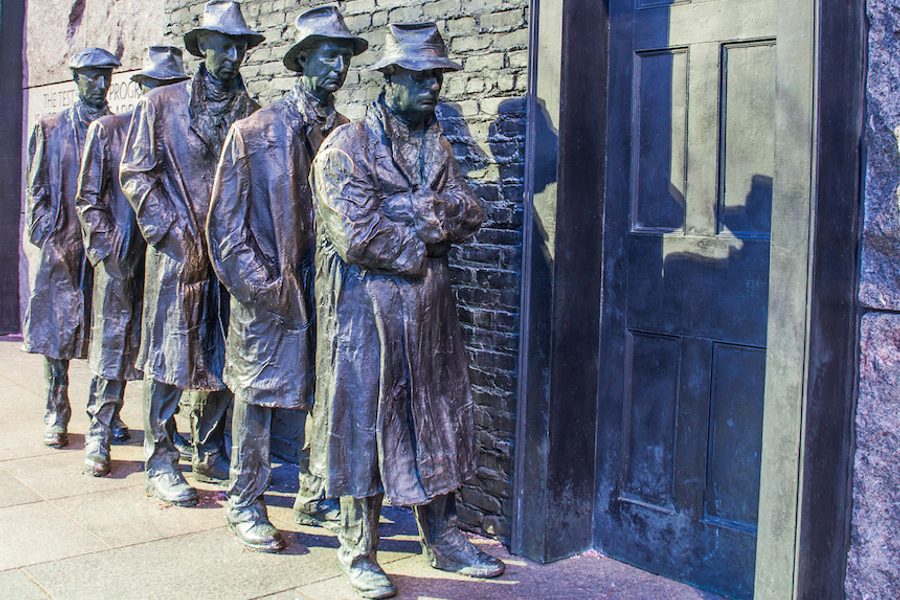The Right’s Anti-Minimum Wage Arguments Have Pretty Much Stayed the Same for 80 Years
Branko Marcetic

Over the past year, the campaign to raise the minimum wage has been steadily accumulating prominence, political allies and, most importantly, successes. Not surprisingly, it has also occasioned a pushback from conservative politicians and columnists who view its increase as a misguided, self-defeating folly.
The main points of the conservative argument against raising the minimum wage tend to be as follows: Increasing it would lead businesses to either raise prices or fire workers (or both) in order to deal with a spiraling cost of labor. This means that while some workers would be lifted out of poverty, many would lose their jobs, plunging them into greater financial straits, while all consumers would lose out from paying more for goods and services. This would ironically hit young, inexperienced and low-skill workers the hardest, as they have the least bargaining power and are typically the first to be fired. It is therefore better to let the market take its course and allow businesses to gradually raise their wages of their own accord.
In fact, on Tuesday, several Republican presidential candidates made some of these very arguments, kicking off the latest GOP debate by stating their opposition to the Fight for 15 movement. Ben Carson claimed that, as a black youth, he would never have been hired as a lab assistant “if someone had to pay me a large amount of money.” Similarly, Marco Rubio protested that, “if you raise the minimum wage, you’re going to make people more expensive than a machine.” He instead proposed helping wages to rise “naturally” by putting forward pro-business proposals that would assumedly trickle down to workers.
While considering these doom-and-gloom predictions, it’s useful to recall the debate that took place nearly 80 years ago, when Franklin Roosevelt first tried to establish a national minimum wage in the United States, as part of the New Deal. The Fair Labor Standards Act (FLSA), which was introduced to Congress in 1937, aimed to eliminate sweatshop conditions by establishing a minimum wage, a maximum work week, and outlawing child labor. It also initially suggested a five-member board that could raise wages and shorten working hours on a case-by-case basis. During June 1937, Congress held three hearings inviting public comment on the proposed law.
The FLSA as proposed wasn’t perfect. Like other New Deal legislation, it excluded farm workers as a matter of political expediency, as a large share of agricultural laborers were African Americans in the south, and Roosevelt needed the support of southern congressmen to get it and future laws passed. Not only that, but as one of the law’s proponents said in the hearings regarding the figure of 40 cents an hour that was being discussed at the time (around $6.60 in 2015 dollars): “it would be a calamity if such a wage minimum as that referred to should in any way be construed as a living wage.” Still, though inadequate, the bill’s supporters saw it as a worthy first step.
The bill’s critics also saw it as a first step, although for them it was decidedly in the wrong direction. While some were solely outraged at the idea of an unelected board of men being given what they saw as dictatorial power over businesses, many were against the very concept of a minimum wage — even one as meager as that proposed. Their objections and predictions will sound very familiar to anyone following the minimum wage debate today. Here’s John E. Edgerton, President of the Southern States Industrial Council, an organization representing southern businesses:
we confess our failure to understand how it is possible to improve the conditions of the underpaid of the overworked by a statute whose inevitable effect will be to increase greatly the cost of production, thus an inescapable advance in prices.
Edgerton went on to warn that raising the wage uniformly would inevitably put southern manufacturers out of business. “Are workers better off without jobs?” he asked.
J. D. Battle of the National Coal Association saw a similar trajectory for businesses if the bill was passed:
There is no break in the chain of cause and effect: increased hourly wages, increased cost per unit of product, a higher selling price, a falling off in demand, decreased production, and decreased employment.
As Robert Dresser of the National Association of Manufacturers (NAM) — an anti-union organization of assorted businesses that fought various New Deal laws — told the congressmen: “you cannot legislate a nation into prosperity.”
Just like today, 1930s conservatives warned that those at the bottom of the ladder would be hurt most by a minimum wage. Guy L. Harrington of the National Publishers’ Association warned the imposition of a minimum wage would “throw all substandard or marginal workers out of employment as a burden to society,” while Battle presented letters from two different businesses claiming low-skill workers – or “those who are not sufficiently competent to earn their pay” – would quickly lose their jobs once the law was passed. A number of those testifying, such Noel Sargent of NAM, even argued that the bill would “make the next depression worse than would otherwise be the case.”
Today, it’s also not unusual to hear conservatives warning that a hike in the minimum wage will simply lead businesses to replace flesh and blood workers with those made from metal and wire, like sushi-making machines or “burger-flipping robots” that can do the job of unskilled workers for a fraction of the cost. This was also a claim made by those opposed to the FLSA. The manager of one Louisiana lumber company claimed that while the low cost of living in the South meant employers hadn’t resorted to “labor-saving machinery” thus far, wage increases beyond a certain point would force them into doing so and “eliminating over half of [their] men.” Meanwhile, the Underwear Institute warned that this and other laws were pushing up the cost of labor which would lead to “increased use of machinery with the effect of displacing manpower.”
Finally, a number of those testifying had near-apocalyptic visions of what the establishment of a minimum wage might mean. Harrington testified:
What is herein stipulated has been tried many times and failed. Rome 2,000 years ago, fell because the government began fixing the prices of services and commodities …We, however, know what has always happened when governments have tried to superintend the industry of private persons. The final result has always been distress, misery, and despair.
He, like many others, argued the bill was putting the United States on the road to “the complete centralization of Federal power” and the creation of “unlimited form of government.” L. N. Bent, the Vice President of the Hercules Powder Company similarly believed government control of wages would lead to government control of prices. Expressing his resentment at the encroachment of the federal government on state affairs, Battle concluded: “South Carolina fired on Fort Sumter for far less pretext than this bill affords.”
This wouldn’t be the last the American public would hear of this rhetoric. Year after year, decade after decade, these same arguments have been trotted out by minimum wage opponents each time a wage increase has been proposed. In 1961, one hotel manager lamented that if it the wage was increased, “you will be able to buy hotels cheap.” Joseph E. Chastain, the owner of Lintz department stores, complained in 1966 that “no company our size can live under such circumstances. Undoubtedly we would have to liquidate.” The company continued to operate for another 41 years. The Chamber of Commerce warned on no less than four separate occasions from 1975 to 1989 that minimum wage rises would cost millions of jobs. More recently, in 2010, FOX News commentator John Stossel used virtually the same words as Robert Dresser did in 1937, stating that, “We cannot legislate prosperity.” You can draw a straight line from 1937 to today’s warnings of “Destroying jobs via wage diktats.”
Nor was the hyperbolc rhetoric of collapse and dictatorial takeover limited to the decade of the 1930s when it came to the minimum wage. In 1960, Senator Arthur Vandenberg (R-MI) warned that “Federal wage-fixing” was driving the United States “closer and ever closer to the centralized authoritarian state,” while Rep. Thomas Hagedorn (R-MN) cautioned that it “strikes at a basic underpinning of our democratic system.” As late as 1997, Mark Wilson of the Heritage Foundation was suggesting that setting a legally mandated wage floor was “socialism.”
The fact that conservatives and business owners have been making the same claims about the minimum wage for at least 80 years does not by itself automatically invalidate concerns about its increase. But it does suggest that conservative arguments should be taken with a grain of salt. Minimum wage opponents have tended to view it as the harbinger of economic doomsday since its inception, even when it was as moderate by today’s standards as the FLSA of 1938 was. The fact that the sky hasn’t fallen yet should tell us something.
Branko Marcetic is a staff writer at Jacobin magazine and a 2019-2020 Leonard C. Goodman Institute for Investigative Reporting fellow. He is the author of Yesterday’s Man: The Case Against Joe Biden.








